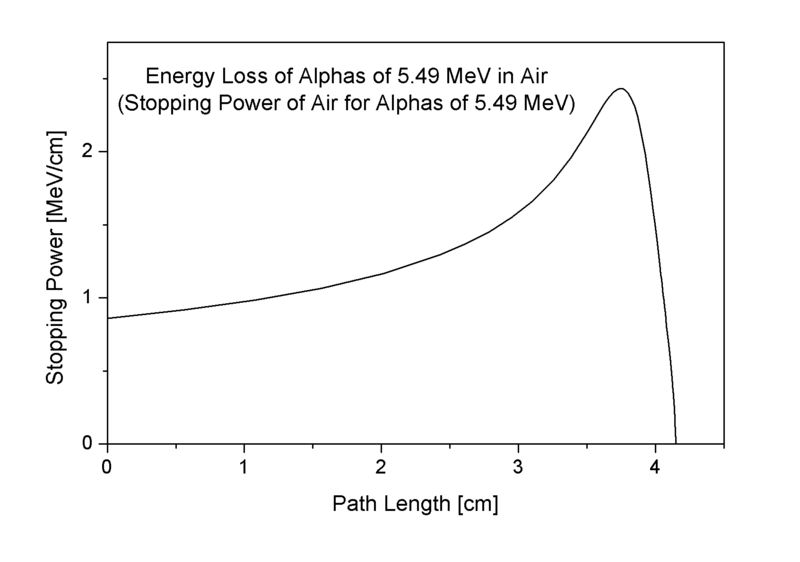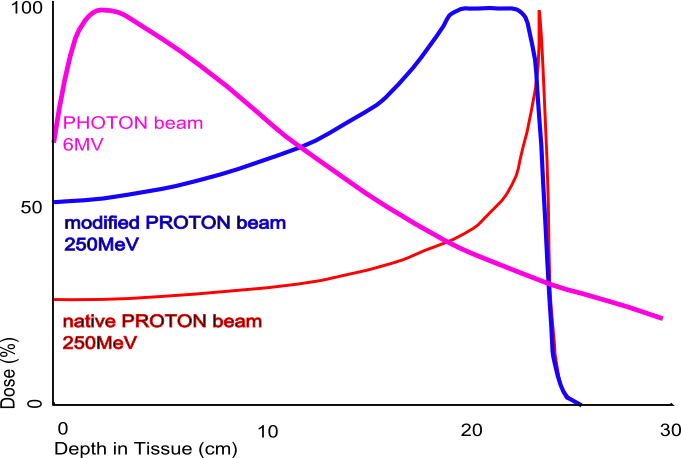Bragg peak
|
WikiDoc Resources for Bragg peak |
|
Articles |
|---|
|
Most recent articles on Bragg peak |
|
Media |
|
Evidence Based Medicine |
|
Clinical Trials |
|
Ongoing Trials on Bragg peak at Clinical Trials.gov Clinical Trials on Bragg peak at Google
|
|
Guidelines / Policies / Govt |
|
US National Guidelines Clearinghouse on Bragg peak
|
|
Books |
|
News |
|
Commentary |
|
Definitions |
|
Patient Resources / Community |
|
Patient resources on Bragg peak Discussion groups on Bragg peak Patient Handouts on Bragg peak Directions to Hospitals Treating Bragg peak Risk calculators and risk factors for Bragg peak
|
|
Healthcare Provider Resources |
|
Causes & Risk Factors for Bragg peak |
|
Continuing Medical Education (CME) |
|
International |
|
|
|
Business |
|
Experimental / Informatics |
Overview


The Bragg curve plots the energy loss of ionizing radiation during its travel through matter. For protons, α-rays, and other ion rays, there is a pronounced peak in the curve immediately before the particles come to rest. This is called Bragg peak, for William Henry Bragg who discovered it in 1903.
When a fast charged particle moves through matter, it ionizes particles and deposits a dose along its path. A peak occurs because the interaction cross section increases as the charged particle's energy decreases. In the figure to the right, it is the narrow peak of the native proton beam curve which is produced by a particle accelerator of 250 MeV. The figure also shows the absorption of a beam of energetic photons which is entirely different in nature; the curve is mainly exponential.
The phenomenon is exploited in particle therapy of cancer, to concentrate the effect of light ion beams on the tumor being treated while minimizing the effect on the surrounding healthy tissue. The blue curve in the figure ("modified proton beam") shows how the originally monoenergetic proton beam with the sharp peak is widened by increasing the range of energies, so that a larger range of depths can be treated. This is typically achieved by using variable thickness attenuators: spinning wedges are often used.